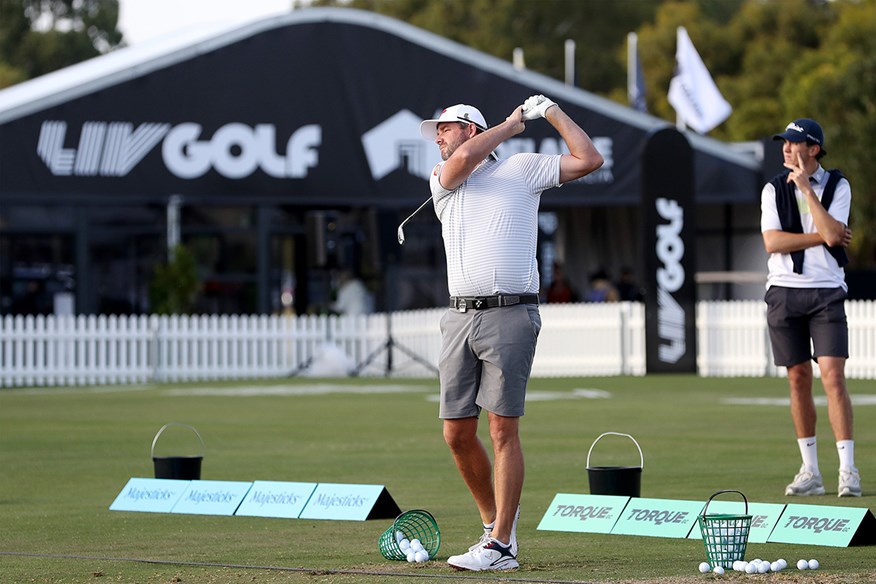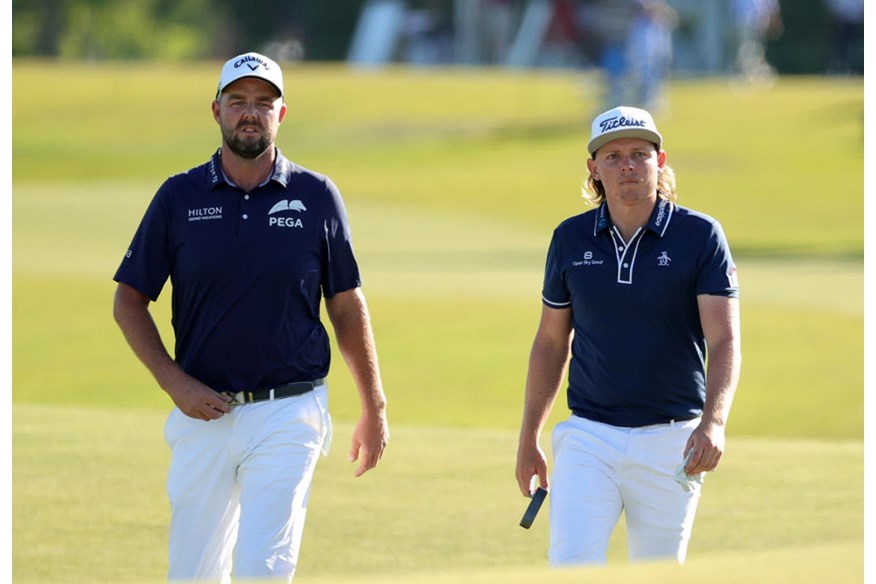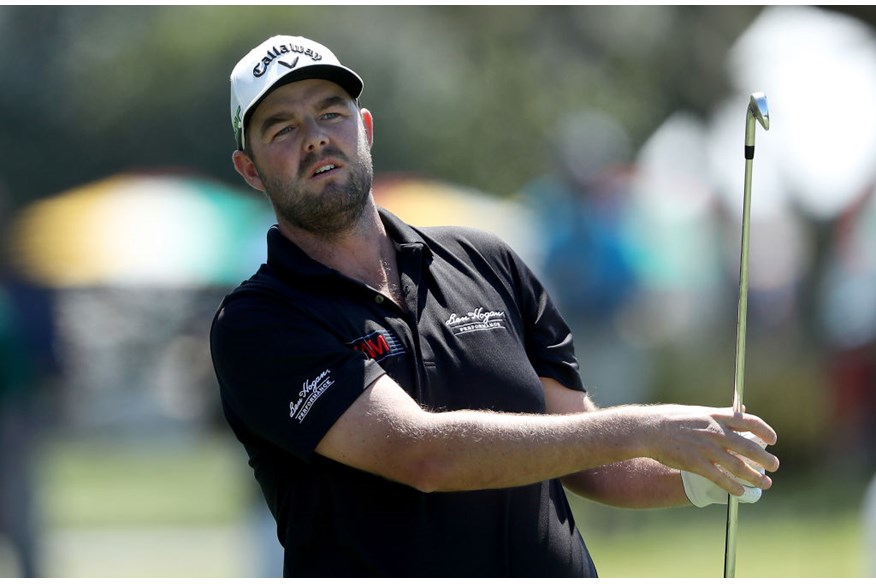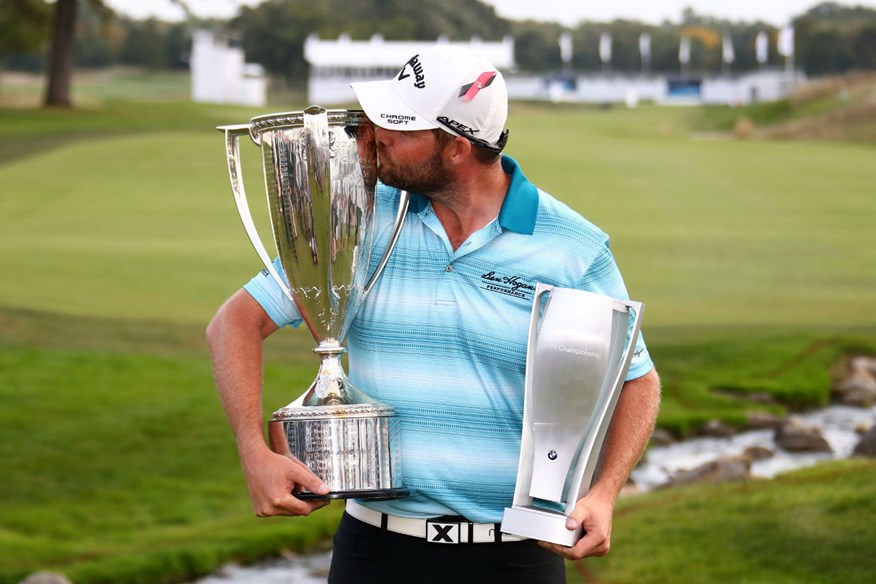Preparing for Portrush: How a tour veteran prepares and strategizes for an Open Championship
Last updated:

Visualization, targeting range carts, and spending no longer than 25 minutes hitting balls – what you can learn from Marc Leishman’s range sessions at the Open.
A 12-time winner on tour, Marc Leishman is well-versed in the challenges presented by major championships and links golf courses in particular.
He grew up playing fierce, firm, and fast sandbelt courses in Australia, which perhaps explains why he has contended more times at the Open Championship than at any other major championship.
In 11 starts, he has finished inside the top six three times and was part of a dramatic three-man playoff, won by Zach Johnson, at St Andrews in 2015.
Ten years on, the long-time Callaway player is about to tee it up in a major championship for only the second time in three seasons after qualifying for golf’s oldest major with a third-place finish at the Australian Open last year.
It helps that he’s coming in full of confidence, having ended a five-year wait for an individual trophy with a one-stroke victory over Louis Oosthuizen at LIV Miami in April.
He’s already admitted in a separate interview that he believes he’s capable of winning the Claret Jug this week, though you sense he would probably settle for a top-four finish, which would secure a return ticket to play in the Open Championship and Masters next year.
In between his practice rounds, we sat down with the Aussie to find out where his love affair with links golf comes from, his strategy for playing in the wind, and why you won’t find him hitting balls for very long on the range this week.
Q. What do you make of Royal Portrush and links golf in general?
Though I didn’t play great in 2019 at Portrush, I think I can turn that around. I love firm and fast courses, and I really enjoy links golf courses in general. They remind me of growing up playing at home in Australia. I love the creativity of links golf and the variety of options in shots you get to play. Navigating the wind is one of my absolute favorite parts of the links golf experience. Hopefully, Portrush gets baked out and the firm and fast conditions make it play in that fashion.

Q. Do you like that side, chasing the ball onto the green and factoring in the roll and slopes?
I think it’s good to have to manage where you’re hitting and missing. If you’re not hitting a good shot, you need to know where it’s going and be comfortable and confident in how you recover. In links golf, it’s all about your misses and not letting them dictate the scores in your rounds.
In the sandbelt in Melbourne, I know you need to do that a lot, and in links golf when it’s firm, you have to make that a priority. If it’s not as firm as I’d like it, then I’ll have to adjust and take what the course gives me and play the conditions to the best of my abilities with a great attitude; that’s the name of the game, good attitude and mindset.
- R&A make surprise announcement with 2025 Open prize money
- Who will tee up at Royal Portrush, and how did they qualify?
Q. How much do you need to adapt your usual routine when preparing for a windy round of links golf?
So much of it is mindset. If you’re playing in rain and wind, it’s critical to realize that it’s not just you who’s getting wet or blown around the property – it’s everyone else that you’re teeing it up against, too.
I think for me, in windy conditions, my warm-up and tempo is a critical thing. If I’m getting fast in my transition, and it’s easy to do that in the wind, that can throw off my game. So I just need to tell myself, ‘Smooth tempo’ and ‘Hit it in the middle of the face.’ If you hit the middle of the club face, then the wind doesn’t affect the ball as much, so that’s a key there as well.

Q. A lot of amateurs are probably guilty of just bashing balls on the range. I’m interested to know what your strategy is and how you structure your warm-up and practice.
I really like getting on the range and feeling the ball coming off the middle of the face on my irons and hitting a few different types of shots in my warm-up. Draws, fades, high shots, low shots. Slightly different finishes at times are also part of those ball flights.
I also make a conscious and intentional effort to have some fun on the range, which helps you to stay creative and condition your mind for some good shotmaking in that round you’re about to play. I might start hitting some big cuts and then some big, sweeping draws. Of course, it’s also fun to try and hit the range cart every now and again to keep it interesting and keep my mind thinking on a creative level, shaping shots and remaining an artist.
- Open Championship honors board: The complete list of every past winner
- Why LIV Golf will break its own record at The Open
Q. Is visualisation a big part of that too?
For sure. You want to picture a target as you stand over each shot. I actually think it helps to picture a fairway or a hole that you know you’re about to face on the golf course, especially one you don’t like. You need to work on hitting shots mentally on that hole as soon as you can – and the range warm-up is the perfect time to start on it.
But different targets work for different minds and different types of players, so you need to find what works best for you. It could be a bit of trial and error before you get there, but you need to own what you are doing.
I’m the kind of player that needs a very, very small target to aim at; that’s just the way my brain works. It’s optimal for me to narrow down to a minute target in the distance. If I have too wide a target, then I struggle focusing on it.

Q. What does that small target look like?
It’s minuscule (laughs). A lot of times, I’m aiming at a rake in a bunker or a tree trunk or something like that. It may sound funny to many club golfers, but I know it works for my brain, and it helps me narrow my focus down to something I can tangibly pursue.
Q. How long is your warm-up before a round?
It always depends on the week. When it’s hot, it’s normally pretty short, and when it’s wet, it’s very short. When it’s cold, it’s a little longer because you need to spend extra attention and time warming the body up when you’re out on the range. When it’s particularly hot, I need to shorten it to primarily conserve energy. Your body is already pretty loose when it’s hot, and mine changes week to week or day to day.
I’m usually at 25 minutes for my range session on a regular day.
- The Open by numbers: Every fact and figure you’ll ever need about golf’s oldest major!
- Xander Schauffele: I celebrated my Open win by drinking tequila out of the Claret Jug!
Q. What lessons or quotes from other players or coaches have really stuck with you when it comes to practice?
I think what resonates is when I’ve heard, ‘Own what works for you.’ Some players want to work for hours and hours on the range. That type of commitment may work for them, but that doesn’t mean that you have to be the same way. If you’re better off conserving your body’s energy by doing shorter and more intentional range sessions, then do that.
I really like to practice with a purpose and be productive with each swing, so I can get done what I really need to do as quickly as possible. So I hit as few shots but with strong intent, and that keeps me engaged. If I start hitting too many balls on the range, then I wear myself out, and I get bored very quickly.

Q. Does practising with a purpose mean that you give yourself consequences or mind games?
It’s just that I’m always hitting it at a target. I see too many amateurs and pros just hitting balls on the range and not having a defined target. It’s so important to have an objective so you know whether or not you’ve hit a good shot or a bad shot. You might have hit a shot off the middle of the face, but if it’s offline, then how do you know if you’ve hit a good shot or not?
I like to always pick different targets and adjust and make new ones for each club in my bag. The more you do this, the more you’ll be ready for the different types of shots that you need throughout the day. The reverse of this is just standing there on the range with nothing going through your brain, and that doesn’t work for me. So I always practice intent with purpose.
- LIV star Tom McKibbin shares his driving range secrets
- How the PGA Tour’s shortest hitter keeps winning.
